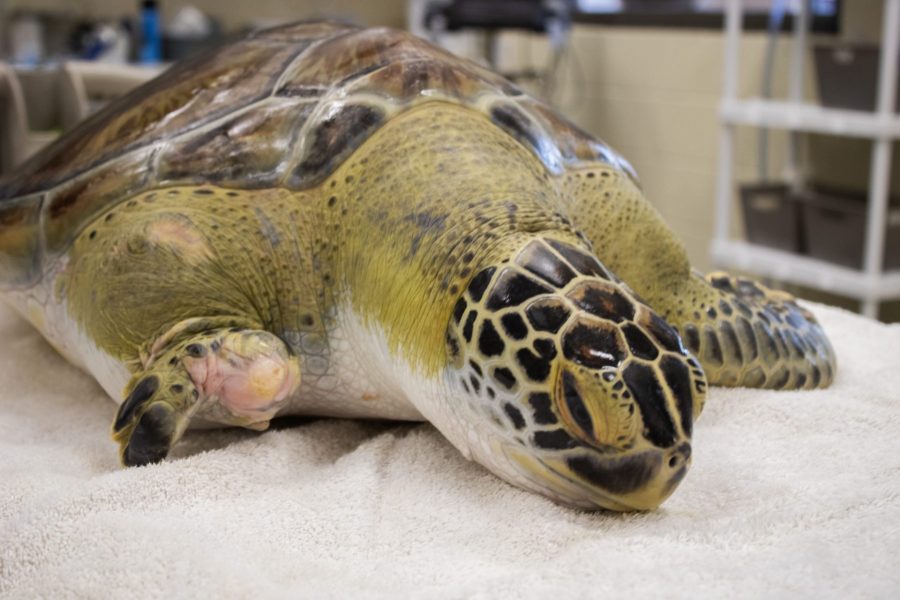McNubbins, a juvenile green sea turtle, will not be released back into the wild due to her severe injuries. McNubbins’ injuries prevent her from dealing with natural hazards and acting on her natural behaviors, such as nesting correctly if she were female. McNubbins arrived at the Sea Turtle Healing Center in October 2021 with missing flippers, likely caused by predators. The center helped McNubbins recover from anemia and sent her to the Florida Aquarium‘s Sea Turtle Rehabilitation Center for a deep-water trial to gauge how she would fare in the ocean. McNubbins did well, but her sex also needed to be determined to assess her viability, and she learned that she was female. McNubbins’ classification as nonreleasable was selected thanks to the information gathered, and the center began finding a home for her at an aquarium or zoo.
Meet McNubbins, the Green Sea Turtle
Green sea turtles are fascinating creatures that can live for over 80 years. Unlike their land-dwelling counterparts, these turtles live almost their entire lives in the water. One such turtle is McNubbins, a 40-year-old green sea turtle living in the waters off the coast of Florida.
Appearance
McNubbins is a large, majestic creature with a dark green shell and a white underside. Her head and flippers are also green with yellow markings, and her eyes are large and dark. Her body can grow up to 5 feet long and weigh up to 700 pounds.
Diet
As a herbivore, McNubbins primarily feeds on sea grass and algae, which she can eat up to 10 pounds daily. She also occasionally feeds on jellyfish, sponges, and small aquatic invertebrates.
Habitat
Green sea turtles can be found in tropical and subtropical oceans worldwide. McNubbins lives in the warm waters of the Gulf of Mexico, where she migrates between different feeding and nesting sites along the coast.
Life cycle
Green sea turtles reach sexual maturity between the ages of 20-50, and females can lay up to 100 eggs in a single nesting season. McNubbins is estimated to have spread over 500 eggs over her lifetime, although she has not been observed breeding in recent years.
Conservation
Green sea turtles are listed as endangered, with significant threats to their existence, including habitat loss, pollution, and hunting. McNubbins, like other green sea turtles, faces constant danger from fishing gear and plastics in the ocean. It is essential to continue efforts to protect and conserve these amazing creatures to ensure their survival for generations to come.
In conclusion, McNubbins is just one example of the fantastic green sea turtles that inhabit our oceans. These creatures are worth protecting and preserving with their unique appearance and life cycle. By reducing pollution and protecting their habitats, we can ensure the survival of these beautiful creatures for years to come.


